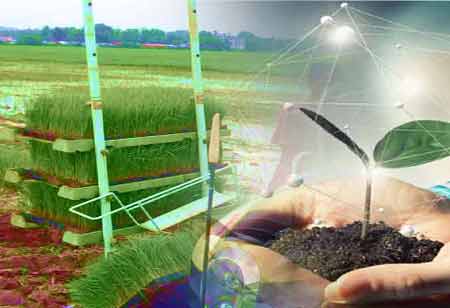Thank you for Subscribing to Agri Business Review Weekly Brief
Enhancing Efficiency with GPS and Telematics in Agricultural Equipment
In today's rapidly evolving agricultural landscape, farmers are increasingly turning to advanced technologies to maximise efficiency and productivity.

By
Agri Business Review | Wednesday, June 28, 2023
Stay ahead of the industry with exclusive feature stories on the top companies, expert insights and the latest news delivered straight to your inbox. Subscribe today.
Power equipment enhances farmer safety by reducing physical strain and minimising exposure to hazardous conditions. Overall, power equipment has become an essential component in modern farming, contributing to the advancement and sustainability of agricultural practices.
FREMONT, CA: In today's rapidly evolving agricultural landscape, farmers are increasingly turning to advanced technologies to maximise efficiency and productivity. One such technology that has gained significant traction is the integration of GPS (Global Positioning System) and telematics in agricultural equipment.
Telematics is the practice of remotely automating decisions or tasks to enhance precision farming solutions. The core concept of precision farming revolves around the notion that farmers should not uniformly distribute fertilizers and seeds across their crops. Instead, a meticulous mapping of the farm is carried out using specialized equipment embedded with soil sensors. This mapping enables the farmer's advanced machinery to adaptively apply seeds and fertilizers at varying rates, based on specific soil parameters observed at different locations in the field. These parameters include nitrogen levels, organic matter content, and moisture, allowing the farmer to make informed decisions through their "smart" machinery.
GPS Technology in Agricultural Equipment: GPS technology allows for precise positioning and navigation in the field, enabling farmers to track the location of their agricultural equipment with accuracy. This technology, when integrated into tractors, harvesters, and other machinery, provides several benefits, including a. Precision Guidance: GPS systems guide equipment operators by providing accurate information on field boundaries, optimal paths, and parallel tracking, leading to reduced overlap and increased efficiency. b. Auto-Steering: Automated steering systems using GPS enable precise driving patterns, reducing operator fatigue and improving the accuracy of operations such as planting, spraying, and harvesting.
Telematics and Data Collection: Telematics refers to the combination of telecommunications and informatics, allowing for the collection and transmission of data from agricultural equipment. Telematics systems, when integrated with GPS technology, offer valuable insights to farmers. Here's how telematics enhances efficiency: a. Equipment Monitoring: Real-time monitoring of equipment performance, fuel consumption, and maintenance needs enables proactive maintenance, minimizing downtime and optimizing equipment utilization. b. Field Mapping and Yield Monitoring: GPS and telematics systems facilitate field mapping, capturing data on soil characteristics, crop health, and yield variability. This information helps farmers make informed decisions regarding irrigation, fertilization, and crop rotation.
Optimising Farm Operations with Data Analytics: The data collected through GPS and telematics systems holds immense potential when combined with advanced analytics. Farmers can leverage this data to gain actionable insights, leading to optimized farm operations and resource allocation. Key benefits include: a. Precision Farming: By analysing field data, farmers can create variable-rate prescription maps, enabling precise application of fertilizers, pesticides, and water, thus reducing costs and minimizing environmental impact. b. Predictive Maintenance: Telematics data can be used to predict equipment failures or maintenance needs, allowing for proactive servicing, minimising breakdowns, and maximising uptime.
GPS and telematics technologies have transformed the agricultural sector, enabling farmers to enhance operational efficiency, improve yields, and reduce costs. By harnessing the power of precise positioning, real-time data collection, and advanced analytics, farmers can make informed decisions, practice precision farming, and achieve sustainable agricultural practices. As these technologies continue to advance, the future of agriculture looks promising with increased productivity and resource optimisation through GPS and telematics integration in agricultural equipment.





